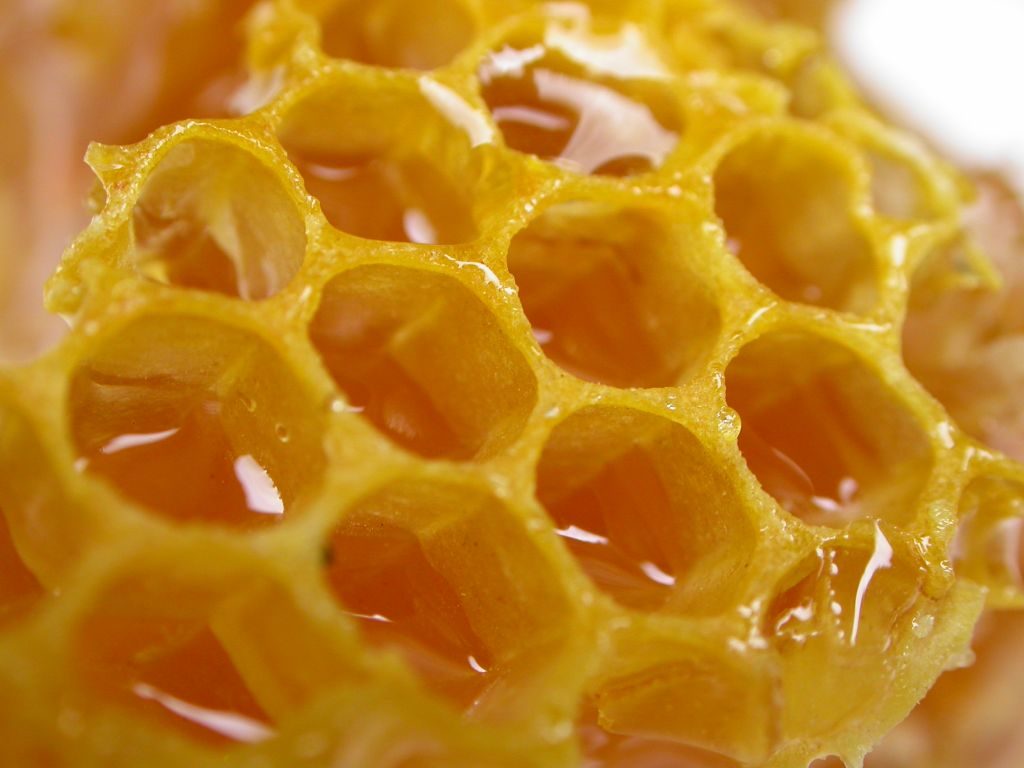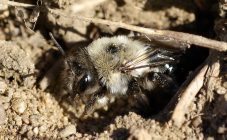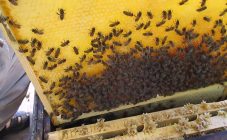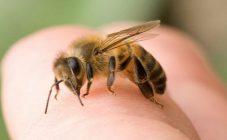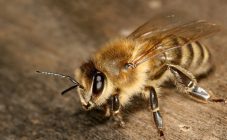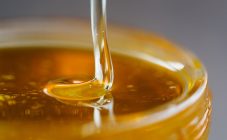Content:
The sealed honeycomb is the signal for the honey harvest. It is they who testify that the product is already filled with useful enzymes and is completely suitable for consumption. If the bees do not bother to "pack" the honey, it is considered immature or of poor quality. What to do with unsealed honey? Can I eat it? The answers to these questions are presented below.
Why don't bees seal honey even though the frames are full
There are 2 reasons why bees do not print honey: in the hives there is either candied or honeydew honey, which is not suitable for feeding insects.
Honey deteriorates due to inappropriate weather conditions and poor hive placement. For example, if insects collect nectar from cruciferous crops and grapes, the honey will be sugared. If you live in latitudes with a good climate and keep the hive near flowering meadows, where the swarm can get nectar from clover, linden, buckwheat, then the honey will be of high quality. However, there are times when the apiary owner himself is the culprit of the resulting candied product, who gives honey to the bees after the honey extractor.
The cause of the appearance of a honeydew product is aphids, worms and various insects that feed on plant sap and secrete a sweet liquid, and bees attack it. A high probability of the appearance of honeydew exists in the case when the hive is located next to the forest, since it is in it that there is a lot of honeydew.
Is it possible to download unsealed honey
Novice beekeepers are often interested in: is it possible to pump honey if the honeycomb is not sealed? You can start pumping out such a product if you are sure that it is already ripe. And this, as mentioned above, is evidenced by the sealed rows. Some experts say that only the top sealed row will be enough, while others argue that honey is considered mature if at least a fourth part is sealed, and there are beekeepers who wait until it is completely sealed.
There is a fairly simple way to make sure the product is ripe. To do this, the frame can be shaken. If honey does not start flowing, it is ready and can be pumped, otherwise it still needs time to fully ripen.
The filling of the frames should be controlled. They should not be overcrowded, otherwise the bees will strive to fill every crack in the hives, and such a load will definitely harm the whole family. Therefore, the first collection is carried out after the clover, acacia and raspberries have faded. Bees need room for the second wave of honey harvest when linden and buckwheat begin to bloom.
There is a myth that you can harvest from an apiary only 2 times per season. It's not like that at all. It all depends on the natural conditions and how strong the bee colony is. Therefore, if conditions permit, it can be collected 4 times. However, honey is often pumped out in mid-July and August.
There are beekeepers who pump out the unripe product from the nests. To avoid problems with honey souring, they go to some tricks:
- If the humidity of unripe honey is only 1-2% higher, then it will be enough to close the lid well and keep it in a room with a temperature of 15-20 ° C for 30 days.
- If the humidity is too high and reaches about 25%, then it is necessary to desorb water. For this, honey is settled in special containers in a room with an air temperature of about 50 ° C and a humidity of about 40-50%. The dishes are taken as wide as possible so that there is a large evaporation area. After a while, the delamination process takes place, this is when the honey is divided into 2 parts and an unripe product floats up. You can not touch it and wait until it ripens, or you can drain the unripe part separately. The place where ripening takes place must be dry and ventilated.
The desorption procedure is stopped when the moisture content of the product drops to 19%. Then the honey is sealed with a lid and cooled to 15 ° C.
What to do with unsealed honey
As a rule, honey is not pumped if the bee stock is less than 30 kg of the sealed product in the fall. If the sealing of the honey does not occur due to the fact that it is of poor quality, then it must be pumped out, otherwise the bees may die.
Unsealed candied honey is dangerous because in winter it will absorb moisture from the environment and begin to flow because it becomes too liquid. The bees will stick to it.
The danger of a honeydew product is that it does not contain antibiotic elements and phytoncides, which prevent the appearance of harmful microorganisms in the hives.
If honey is not suitable for feeding insects, and they decided not to seal it, then such a product is pumped out and sugar syrup is given to the bees. This will help avoid nosematosis (diarrhea in bees) and other troubles. If the bees start harvesting honeydew honey, then the feeding frames should be removed from the hive and honeycombs inserted so that they can be filled with honeydew. After that, the honeycomb with a low-quality product is taken to the hive, and the good frames are returned, which are left to the bees for the winter.
How to understand that honeydew honey is in the hives? It's not difficult at all. Such a product has a dark color with a greenish tint. In addition, honeydew honey has an unpleasant aftertaste and a less intense aroma.
There is also a very simple method that will help to detect honeydew honey, which is a real threat to insects. This method is called drip. For the experiment you will need:
- glass test tube;
- pure water;
- lime water or wine alcohol.
The procedure is quite simple, you must:
- Take water and honey in equal amounts, then add lime water 2 times more to them.
- The resulting consistency must be boiled.
- If flakes are formed, then there is a pad.
And the second way is alcohol. It is more accurate. For such an experiment, you need to take 2 parts of honey and 1 part of water, add 10 parts of wine alcohol to them. The resulting mixture is shaken and, if a sediment appears, the bees have prepared honeydew honey.
So, if you pay attention to the apiary, follow all the rules of collection and observe all the terms, then the honeycombs will be sealed, and the honey is of high quality, tasty and fragrant.
